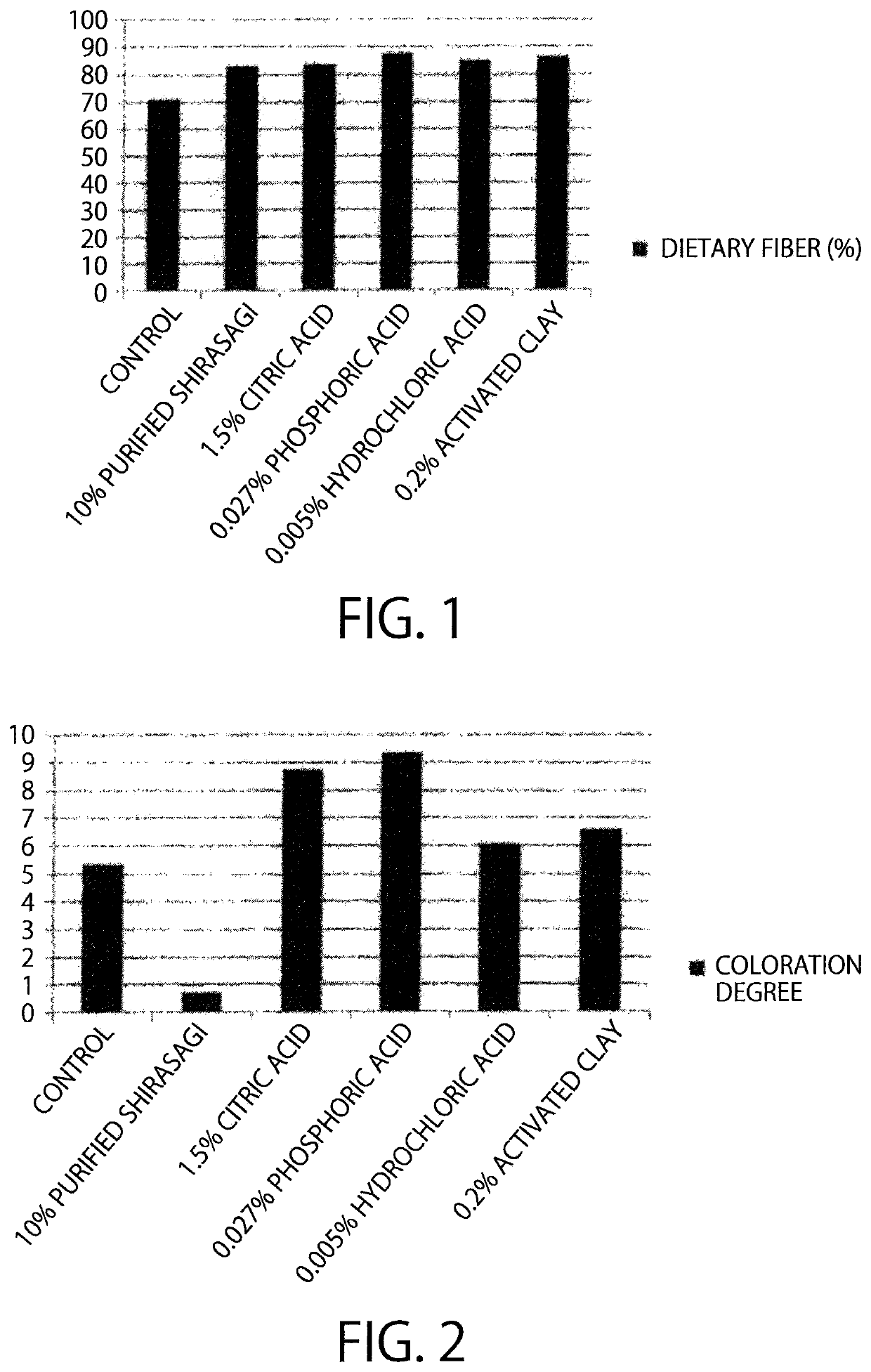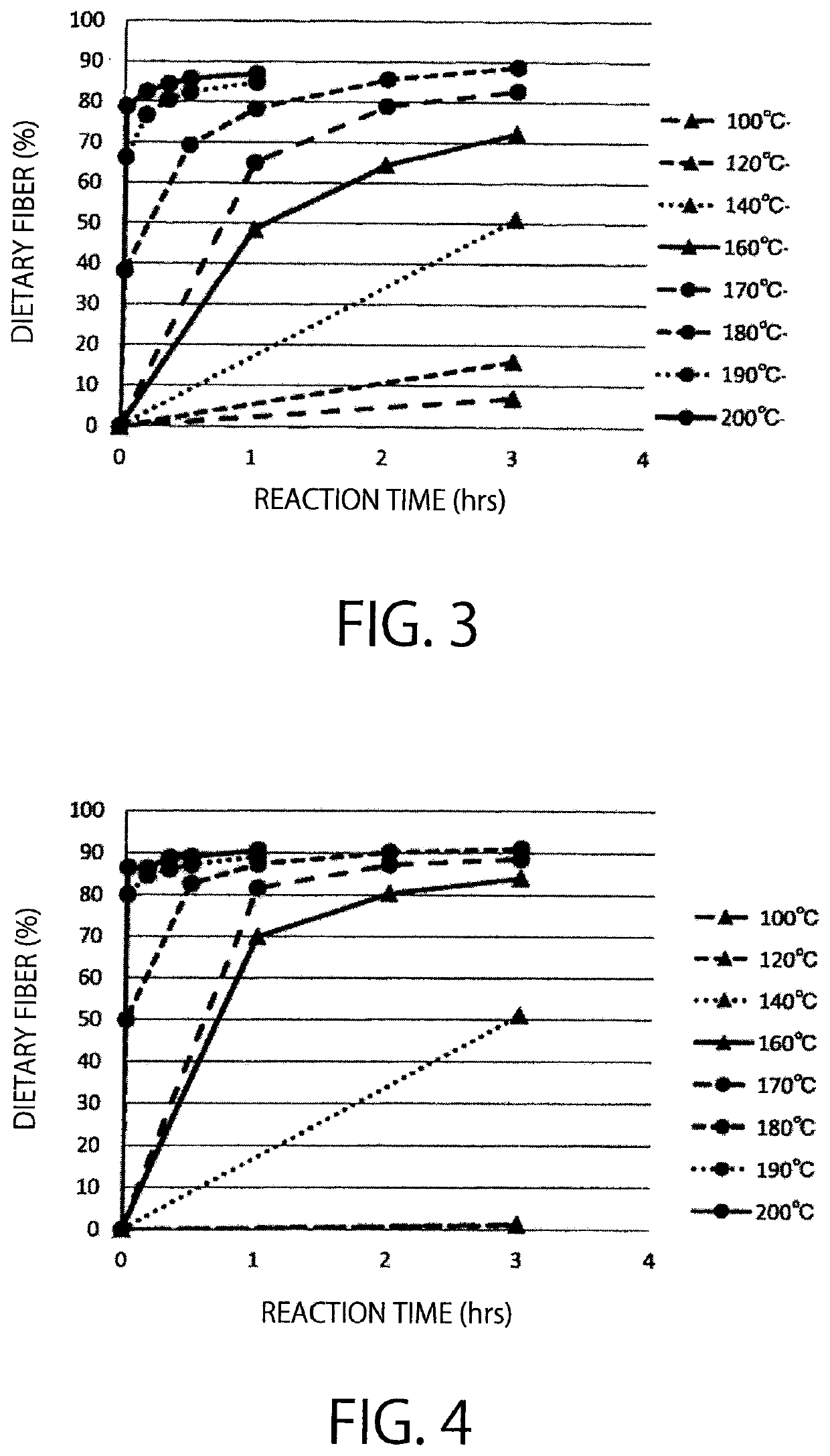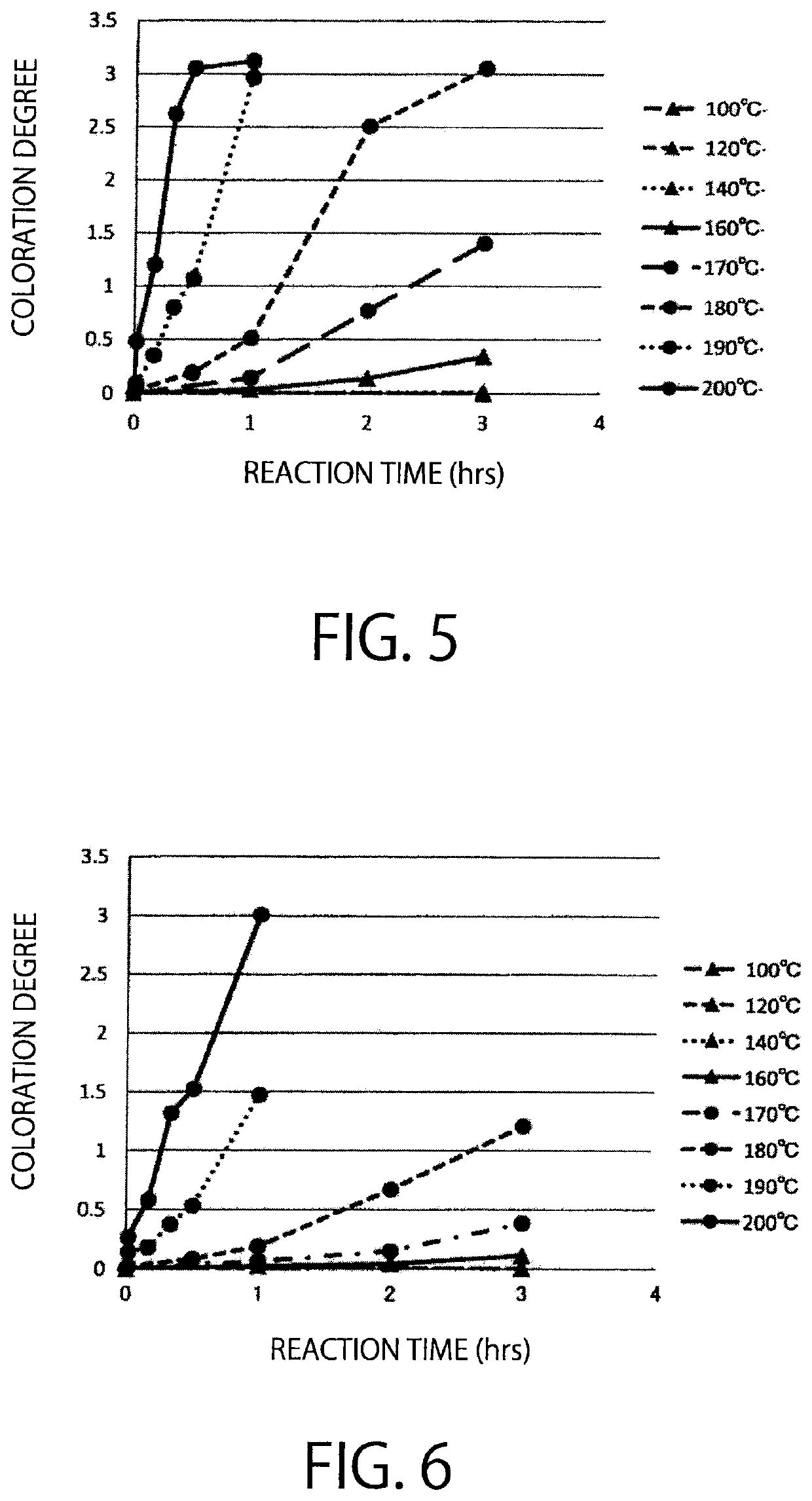Saccharide polycondensate, method for producing the same, and application therefor
a technology of saccharide polycondensate and polycondensate, which is applied in the direction of application, oligosaccharides, chewing gum, etc., can solve the problems of colorability problems of saccharide polycondensate obtained by a conventional method, and the catalysts and solvents used in the case of polycondensation are not suitable for food, so as to achieve easy removal, low price, and safety.
- Summary
- Abstract
- Description
- Claims
- Application Information
AI Technical Summary
Benefits of technology
Problems solved by technology
Method used
Image
Examples
examples
[0117]The present invention will be specifically described below by way of examples, but the present invention is not limited to these examples.
[0118]Various measuring methods and analytical methods shown in Examples were carried out as follows.
Measurement of Dietary Fiber Content
[0119]Dietary fiber content is measured by high-performance liquid chromatography (enzymatic-HPLC method) disclosed in Eishin No. 13 dated Apr. 26, 1999 (with respect to an analytical method of nutrients in Nutrition Labelling Standards). Specifically, the measurement was made as follows.
[0120]First, 1 g of a sample is accurately weighed and 50 ml of 0.08 mol / l phosphate buffer is added, thereby confirming that pH is 6.0±0.5. To this is added 0.1 ml of a thermostable α-amylase (Sigma Corporation: derived from EC3.2.1.1 Bacillus licheniformis) solution and the solution is poured into boiling water, and then the mixture is left to stand for 30 minutes while stirring every 5 minutes. After cooling, pH is adjus...
example a
Saccharide Polycondensate and Production Thereof
example a1
Study (1) of Various Catalysts in Saccharide Polycondensation
[0158]Examination was carried out, whether or not activated carbon has catalytic activity of a saccharide polycondensation reaction, while comparing with a citric acid catalyst, a phosphoric acid catalyst, a hydrochloric acid catalyst, and a mineral catalyst.
[0159]Regarding a sample using activated carbon as a catalyst, 15 g of a hydrol (High Glu #9465, DE94, solid content 65%, manufactured by Nihon Shokuhin Kako Co., Ltd.) and 10% (per solid content) of activated carbon (Purified Shirasagi, manufactured by Japan EnviroChemicals, Ltd.) were mixed in a stainless steel vessel, and then the mixture was reacted in a hot air dryer for 1 hour (at 180° C.). In case where citric acid, phosphoric acid, hydrochloric acid, and activated clay are used as catalysts, the reaction was carried out in the same manner as mentioned above, except that 1.5% (per solid content) citric acid, 0.135% (per solid content) phosphoric acid, 0.005% (pe...
PUM
| Property | Measurement | Unit |
|---|---|---|
| temperature | aaaaa | aaaaa |
| temperature | aaaaa | aaaaa |
| temperature | aaaaa | aaaaa |
Abstract
Description
Claims
Application Information
 Login to View More
Login to View More - R&D
- Intellectual Property
- Life Sciences
- Materials
- Tech Scout
- Unparalleled Data Quality
- Higher Quality Content
- 60% Fewer Hallucinations
Browse by: Latest US Patents, China's latest patents, Technical Efficacy Thesaurus, Application Domain, Technology Topic, Popular Technical Reports.
© 2025 PatSnap. All rights reserved.Legal|Privacy policy|Modern Slavery Act Transparency Statement|Sitemap|About US| Contact US: help@patsnap.com



